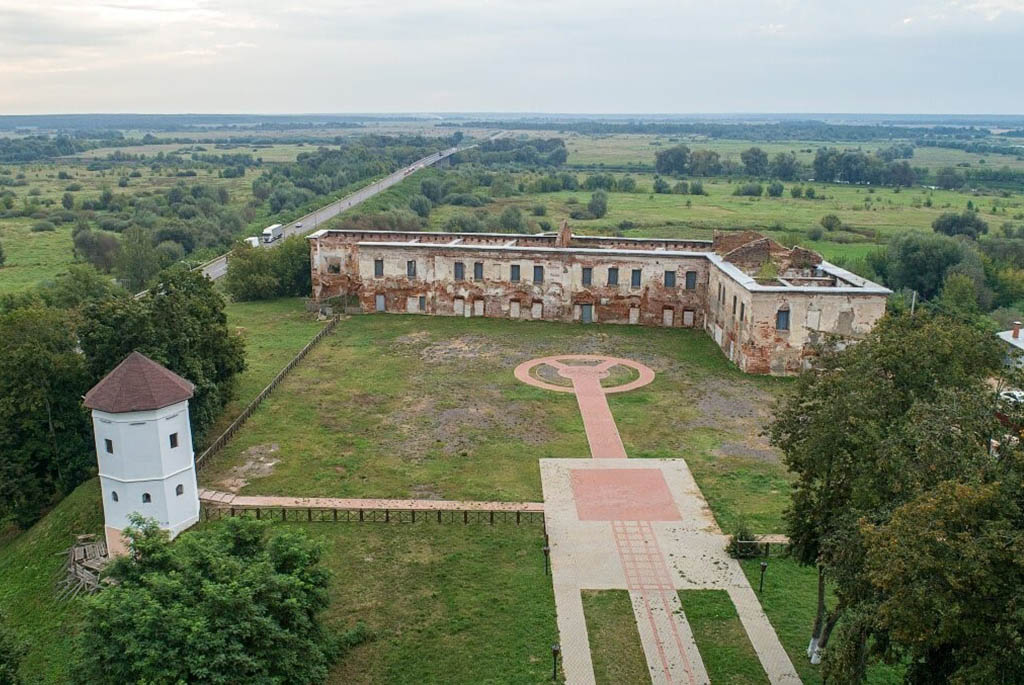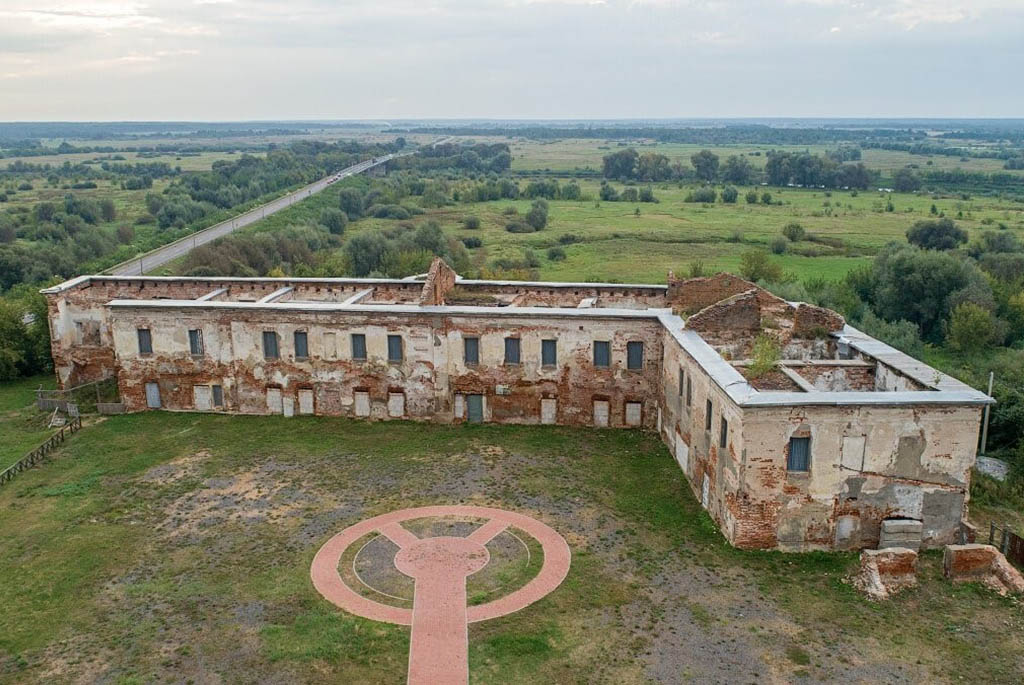For centuries, the settlement belonged to noble princes and influential magnates – Prince Svidrigailo, the Goshtold family, the hetman of the Grand Duchy of Lithuania Chodkiewicz, and the Sapieha family.
In the 14th-15th centuries, the town was considered well-fortified – it was surrounded by a deep moat with bastions, a defensive tower rose at the entrance, and one could only enter the settlement through large stone gates. In the late 16th century, after an unexpected attack by the Cossacks, the owner of Bykhov, Jan Karol Chodkiewicz, decided to fortify the town by building a defensive castle. The construction work was completed at the beginning of the 17th century. Bykhov Castle was a mighty impregnable fortress, surrounded on three sides by a deep moat.
In 1621, Bykhov passed into the possession of the Sapieha family. The new owners decided to strengthen the defense of the castle - they completed the bastions, erected two-tier defensive towers on the western side, strengthened the gates with locks and a metal grate. The fortress was a rectangular territory, with outbuildings placed around its perimeter, and the eastern part housed the master's palace, designed in the Baroque style with elements of Renaissance. It was a two-story building – the first floor housed ceremonial halls, dining room, service rooms, the second floor – living rooms. The towers housed a library, chapel, and study. The main facade of the palace was oriented towards the Dnieper River. The entrance to the building, facing the inner courtyard, was framed by a covered arched gallery.
The castle repeatedly withstood enemy assaults and sieges. During the Northern War, it was captured by Russian troops, as the owners of Bykhov sided with the Swedish king.
After the uprising of 1830, where the Sapiehas supported the rebels, Bykhov Castle was confiscated by the state. From that time on, the building gradually lost its defensive significance. Its walls housed a prison, then barracks and military stores. During the Great Patriotic War, the castle housed the headquarters of the German occupiers and a Jewish ghetto. In the second half of the 20th century, the castle premises were used for the needs of a woodworking enterprise. In 2004, a large fire broke out within the walls of the fortress, damaging the already old building, turning it into ruins.
Between 2010 and 2012, the area around Bykhov Castle was cleaned, and the building itself was conserved. By 2013, two towers of the defensive complex were restored, but due to a lack of funds, the restoration work was temporarily stopped.
Now, on the site of one of the most powerful fortifications of the Polish-Lithuanian Commonwealth era, only traces of its former grandeur can be seen – parts of the moat, bastions, and the walls of the Sapieha palace. But even the remaining semi-ruined buildings can amaze travelers with their impregnability. The castle complex area is open to visitors. Neatly maintained paths lead to it, along which benches and lamp posts are placed, atmospherically illuminating the castle in the evening. Here you can wander on your own, feel the breath of history, touch the mighty brick walls, see the vaulted ceilings of the lower tier, climb the stairs to the first floor. When walking through the ruins, care should be taken, and attention should be paid to one's footing – after all, the building has stood abandoned for many years. Near the castle is another example of defensive architecture – the building of a synagogue, built in the early 17th century.
You can reach Bykhov by car on highway M4, turning off onto highway R71 along the way. There is no direct bus or rail connection with the capital. By train, you can only get there with transfers in Zhlobin, Osipovichi, or Mogilev.





